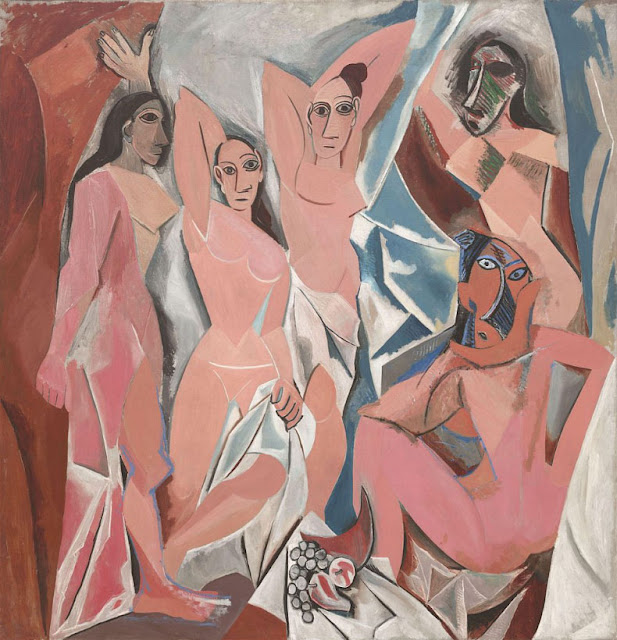“Every now and then one paints a picture that seems to have opened
a door and serves as a stepping stone to other things.” ―
Pablo Picasso
 |
Les Demoiselles
d'Avignon (The Young Ladies
of Avignon, and originally titled The Brothel of Avignon)
Oil on canvas, size: 243.9 cm × 233.7 cm (96 in
× 92 in)
“Les Demoiselles d'Avignon” is
one of the most famous works of Pablo
Picasso (1881-1973). It is painted in a period of nine months during 1906 and 1907, when Picasso had
retreated himself to a small village in the Pyrenees. When he showed
the painting to his avant-garde friends, they fell silent.
Only Matisse broke
out laughing.
Picasso
was during a visit to the Museum of Ethnography in Paris captivated by the magical fetishes, objects that were made for the expulsion of
evil spirits. Against the writer André Malraux
Picasso speaks of
the work as "my first devils elimination painting".
In
1916 it was shown in a private room.
The name of this salon was then temporarily changed
from "Le bordel d'Avignon" to "Les Demoiselles". The canvas was only shown
in public for the first time in
1937. In 1939 the Museum of
Modern Art in New York City bought it.
It still hangs there.
(source: Honour & Flemming, General art history, Meulenhoff, Amsterdam NL).



















